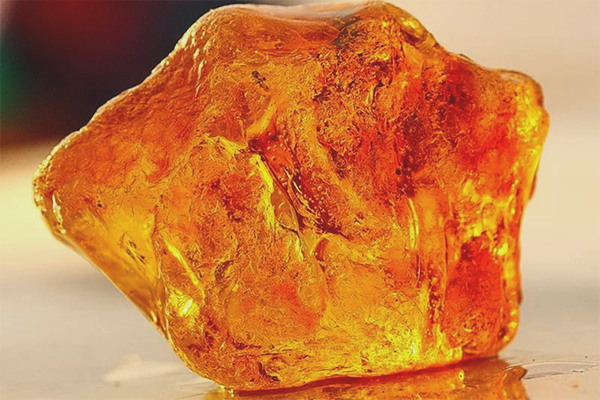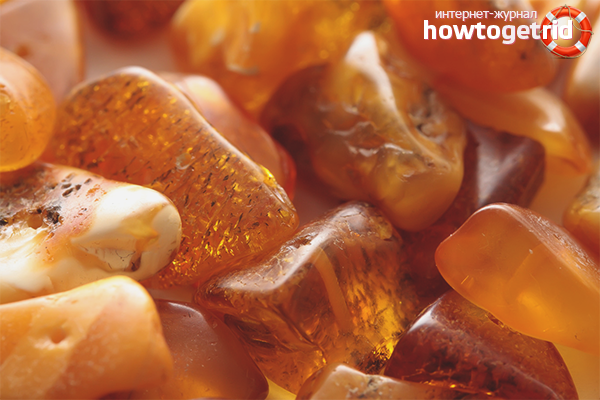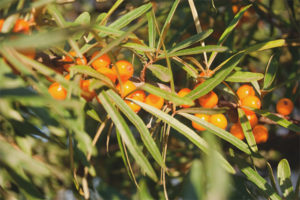The content of the article
Amber is a beautiful gemstone that was formed over 50 million years ago. This is due to its relatively high cost. Real amber has a warm honey shade, although it can be black, whitish and even blue. Natural amber stones are the petrified resin of the most ancient coniferous trees.
Where amber is used
Amber is widely used in jewelry. Not only jewelry is made from amber, but also a purse, watches, cigarette cases, chess, caskets and other accessories. That only is the famous amber room, which was decorated with amber panels, ornaments and panels. The material is quite soft, therefore, requires special experience and skill of the master.
Jewelry waste (namely, amber chips and powder) is used in the chemical industry. From small particles of amber make succinic acid, which is used in many spheres of human activity.For example, a transparent varnish is prepared from amber, with which the furniture is covered, amber is the perfect bundle for sandpaper. Amber varnish is coated on wood to protect it from moisture and other external influences. This was especially used in the construction of ships. Now expensive varnish is covered with amber lacquer in order to prolong their service life.
Amber is often used in medicine. It prevents the development of bacteria and blood coagulation. Therefore, it is used to cook dishes and containers for operating rooms. In ancient times, amber was used to mummify bodies.
The main field of application of modern amber is, of course, the jewelry art. But modern technologies for the production of artificial stones are so developed that it is quite difficult to distinguish real amber from cheap imitation. What can be hidden under this noble name?
Imitations of amber
Here are some materials that can impersonate amber.
- Resin. Sometimes, amber is given a simple resin of modern trees. This stone is slightly softer than natural amber.In addition, the fresh resin emits a light, coniferous smell; in amber, this smell appears only when ignited or strongly rubbed. If you look closely at the stone through the rays of sunlight, you can see that natural amber has light wavy inclusions. This suggests that the stone was layered over the centuries. In turn, the fresh resin is usually uniform.
- Kopal. Kopal is the same resin of conifers, but not as old as amber. Kopalu is not more than one hundred thousand years old, while amber is millions of years old. With quality processing, digging is difficult to distinguish from amber, even to an experienced jeweler. However, the differences are still there. First, the copal melts much easier than amber, but this method does not suit us - we will have to spoil the product. If you heat the stone on the fire, the copal will start to produce an unpleasant medicinal smell. Amber will give you a coniferous-clove scent.
- Kauri This is the name of the tree from which the resin is made, similar to amber. With good processing, the resin is similar to amber products, although a little softer. Kauri is rarely issued for amber in jewelry, but it is actively used in the furniture industry.
- Plastic. Artificial material can sometimes be well processed and difficult to distinguish from amber from a photo. But you will understand where the natural stone, and where cheap plastic, as soon as you take it in hand. Amber has a weight, but plastic is almost weightless.
- Glass. Sometimes they give out glassware for amber. In terms of weight, they practically do not differ, and in appearance, too. The only difference is hardness. If the amber can be slightly scratched, making a scratch on the glass is much more difficult.
In addition, stones such as bernite, polybern, bakelite, faturan, celluloid, casein, ambroid, polyester, and even acrylic can be used as amber. Experienced jewelers impart physical and chemical properties of amber to artificial stones in order to sell it at the price of solar stone. But be prepared for a real test, because you are not going to buy cheap stuff for the price of real amber?
How to distinguish amber from a fake
If you have the opportunity, you will certainly seek help from a specialist before purchasing, although sometimes an experienced master will not be able to distinguish a real stone from a quality fake.Here are some simple ways to help you discover the true amber on the counter.
- Look through the stone at the sunny color. Natural amber can not have a uniform and smooth structure, without inclusions and internal stains. Remember, the stone was formed for many years, how can it be perfectly homogeneous?
- Real amber is quite light (unlike other artificial stones). Only plastic can be lighter than amber.
- Sometimes fragments of animal fur, insects, and other tiny particles remain in the resin of a coniferous tree. Often, manufacturers use this technique by placing an insect inside an artificial resin. But pay attention to the body of the unfortunate midge or mosquito - if it is smooth, the wings are spread out and arranged symmetrically - this is a fake. If the midge in the natural environment got into the resin, she probably tried to get out, her wings and limbs were damaged in that case. A beautiful little bug posing in front of you is a cheap and tasteless imitation.
- Pay attention to the bubbles inside the stone. If amber is natural, the bubbles are spherical. That is, the material is so dense that the air does not tend to exit, but freezes at the smallest volume.But in the viscous structure of the resin air tends to the surface, and therefore freezes in an elongated form.
- You can determine the authenticity of amber using the following method. Prepare supersaturated salted water in a glass of water. That is, add so much salt to the water so that it stops dissolving and settles down with small crystals on the bottom. Dip amber in salt water. If the stone is real, it will float to the surface, if it is artificial, it will certainly settle to the bottom. However, this method is suitable only for pure stone, without rim. That is, if you have an amber ring, it is useless to check it, since the weight of the metal frame will still pull it down. Sometimes it happens that the beads, dipped in salt water, freeze in the middle. How is this possible? In such cases, it is advised to dissolve the beads. Here everything becomes clear - some beads remain on the surface, while others hopelessly fall to the bottom. I wonder why, in the Baltic Sea, amber does not float on the surface, because there is so much of it at the bottom? And all because the water there is not salty, and that does not pop up precious stones. It is for the better - we will preserve beauty and wealth for future generations ...
- The amber shop can be checked as follows. Rub it on wool or hair. The real stone will begin to electrify and attract small pieces of paper and hair to itself. Kopal and other resins do not have this property.
- If you have an ultraviolet lamp, you can verify the authenticity of the stones with its help. To do this, look at the light through the supposed amber. Natural stone will sparkle with blue and green colors. Artificial stone will not give any reaction.
- If all methods are tried, you can resort to extreme methods. To do this, flip the product and from the inside try to cut a piece of stone. Natural amber will crumble, you will not be able to make chips. But the artificial resin will certainly curl up into swirling chips.
- If you have acetone or just nail polish remover, use it in your search for truth. Dampen a cotton pad in a liquid and slide it over the product. If you are digging, kauri or other young resin, a trace will remain on the stone. But on the natural amber stain will not be.
Knowing these simple ways, you will not allow yourself to be deceived.
Since ancient times, Amber has been famous not only for its beauty, but also for its mystical properties. The ancients warrior cut out beads from stone and certainly put them on the march to return home unharmed. With the birth, the child was given a stone of amber with a hollow - it was believed that the ancient spirit lives in it, which will protect the baby. Take care of family amber values, perhaps they preserve peace of mind and homeliness.
Video: how to distinguish natural amber from pressed












To send